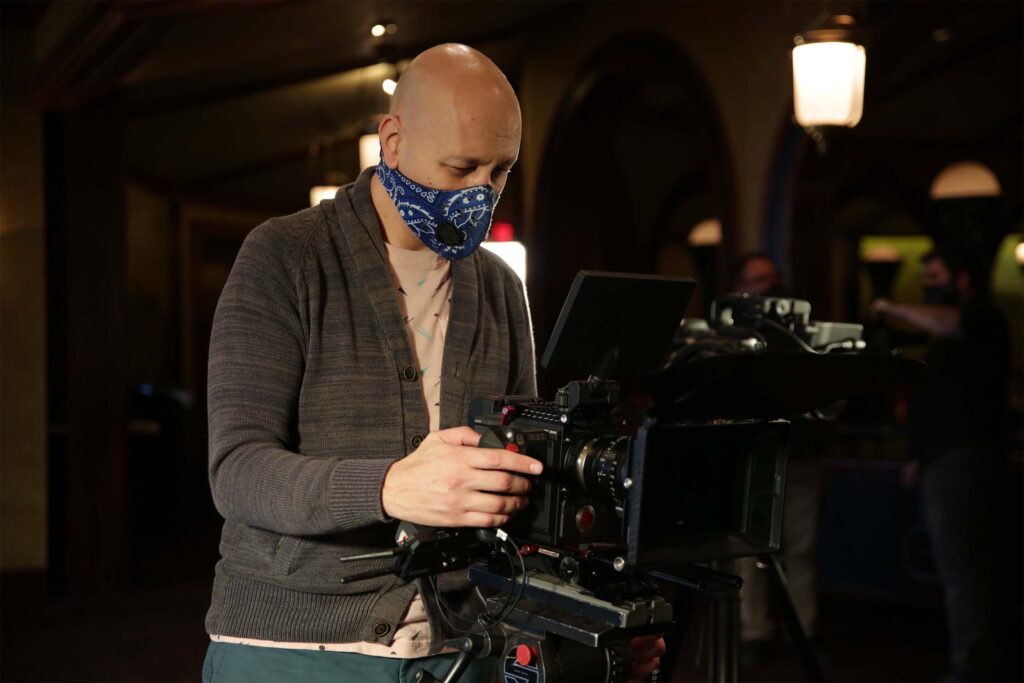
Tips for Producing Great Interviews
Part I: Rules for Producers in Pre-Production
Producing great interviews and testimonials is often a challenge for media and video production professionals. The most powerful way to tell a brand story is to let happy clients tell it for you. Testimonials feel authentic because: The people making the pitch aren’t actors, their stories are real, and their enthusiasm is genuine.
But authenticity has its own challenges. Anyone who isn’t used to speaking on camera is likely to feel uncomfortable with one pointed at them. That’s one reason it’s so important to have a producer on set whose job is to make the subject feel like the interview is a normal human interaction.
But of course it isn’t. An interview is a highly fraught social interaction that can be tense if the guest isn’t properly prepped. Worse, a tense guest can result in weak footage, and you may only realize it once you’re reviewing it in the editing suite.
Here are four rules for testimonial interviews:
1. Know your project better than anyone.
If you’re always thinking about the interviews you’ve already done for the project and planning for the interviews ahead, you’ll ask better questions. With that kind of mindfulness, your interviews will be more relevant to each other and to your main message. You’ll also shoot better B-roll and make more use of the footage you already have. Take a lot of notes and reviews the answers as you go. Then you’ll know how the answers you’re getting will fit into the edit.
2. Keep your project a little flexible.
Never plan around an assumption of what a guest will say on camera. An experienced producer goes into an interview with an idea if they’ll hear about the product or subject, but leaves it slightly open-ended so the final voice-over or host script can be written around the interviews—not the other way around.
The best part of an interview is often a surprise, so save your voice-over or on-camera narrator for the end of the production process. That way, you’ll have the flexibility to adjust the script in support of what’s said in the interviews and your whole production will be more cohesive.
3. Take the time to put your subject at ease.
Everyone’s carrying an HD camera in their pocket these days and recording each other with it. But it’s different when a stranger is recording you, and many people freeze up in front of lights, mics, and professional cameras. Establish a personal connection—talk about anything. Let them know you’re just here to have a conversation, nothing to be afraid of.
Here are some of the techniques you can use to manage expectations:
Get maximum advance contact.
Talk as much as possible before the shoot. It’s not just an opportunity to allay your guests’ fears, but also to plan with them. Call or meet ahead of time to describe how the shoot will work, and ask for any information they can provide to help you plan, such as photos of themselves and the space where you’ll record.
Explain the mechanics of the shoot.
Remember that you’re in a highly technical, creative field, and most of the general public is only vaguely aware of how the process works. You take for granted a lot of knowledge about doing a shoot and probably have no problem visualizing one. For the general public, though, these are big questions, often with surprising answers: How long should it take? How big is your crew? How much equipment will you bring? What should I wear on camera? Make sure you take the time and make the effort to put yourself in your subjects’ shoes and answer these questions and any others they have.
Describe your technique.
You’ll need to explain concepts like editing out the interviewer asking the question so the viewer only hears the interviewee talking. Even someone who’s watched documentaries may not have ever considered there’s someone off-camera asking questions that the interviewee has to include in her answers to make them coherent in the final edit.
You may also ask your guest to rephrase certain answers for length and clarity, or to capture multiple angles of the same response to help the editing process. But these reasons won’t be clear to most guests, so be sure to describe them before you begin.
4. Don’t do the interview before you’re rolling.
Pre-interviews are a common technique for journalists and talk-show hosts, but their guests are often seasoned interviewees. For client testimonials, you want to save every bit of spark for the set.
Your interview footage should capture the spontaneity of someone telling you their story for the first time, not rehashing something you talked about earlier and off camera.
If you are preparing a guest for an upcoming interview and the guest starts talking about the topic, redirect them to save it for the interview.
Typically when someone knows he’s repeating himself, he’ll say something along the lines of “like I said earlier,” which won’t make sense if he said it off camera or you need to edit his remarks in a different sequence.
If you follow these guidelines to prepare for your next interview, you’ll see the benefits as soon as you’re on set. But the shoot itself is full of opportunities for improvement, too. So in our next post, we’ll look at ways to conduct better interviews and tease out the best answers from your guests.
